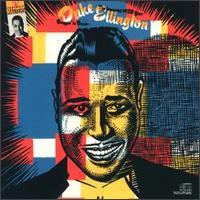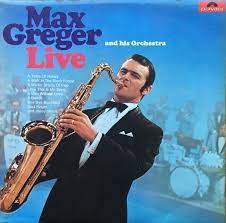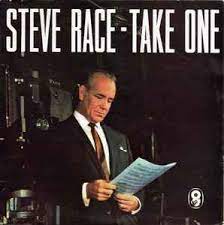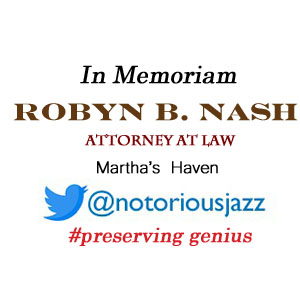
Daily Dose Of Jazz…
William Taylor Sr. was born Washington, D.C. on April 3, 1906 and began his musical education first on the tuba but later picked up the bass alongside it. After moving to New York City in 1924, at 18 he initially played with Elmer Snowden, then Willie Gant and Arthur Gibbs, followed by two stints with Charlie Johnson closing out the Twenties and reuniting in the early Thirties. He would go on to perform with Duke Ellington, McKinney’s Cotton Pickers, Fats Waller, and Fletcher Henderson.
He recorded with Jelly Roll Morton on three sessions in 1930. From 1935 to 1940, he again played with Ellington, and it is for this association that he is best remembered, often playing at times with bassists Hayes Alvis or Jimmie Blanton. During that time he recorded with Cootie Williams and Johnny Hodges.
The Forties saw him playing with Coleman Hawkins, Red Allen, Joe Sullivan, Raymond Scott, Cootie Williams, Barney Bigard, Benny Morton, and Cozy Cole. Later in the decade he freelanced in New York before moving back to D.C. in 1949.
Bassist Billy Taylor Sr., who led his own ensemble for Keynote Records in 1944, transitioned on September 2, 1986 in Fairfax, Virginia.
More Posts: bandleader,bass,history,instrumental,jazz,music

Daily Dose Of Jazz…
Max Greger was born on April 2, 1926 in Munich, Germany. In 1948 at 22 he founded his first sextet with acclaimed musicians, including Hugo Strasser. By 1959 he became the first western orchestra to tour the Soviet Union.
1963 saw Max putting together a top orchestra for ZDF, which for years supported all the major TV shows. He was honored with the Officers Cross of the Order of Merit of the Federal Republic of Germany, the Bavarian Order of Merit, and has a memorial plaque with his handprints and signature in Berlin-Mitte.
Saxophonist, conductor and big bandleader Max Greger, who recorded over 150 records in jazz and pop music, transitioned on August 15, 2015 in his hometown.
More Posts: bandleader,conductor,history,instrumental,jazz,music,saxophone

Daily Dose Of Jazz…
Stephen Russell Race was born April 1, 1921 in Lincoln, England and learned the piano from the age of five. His education from 1932 to 1937 was at Lincoln School, where he formed his first jazz group. At sixteen, he attended the Royal Academy of Music, studying composition under Harry Farjeon and William Alwyn. After leaving the academy, he wrote occasional dance band reviews for Melody Maker and, in 1939, joined the Harry Leader dance band as pianist, succeeding Norrie Paramor.
Race joined the Royal Air Force in 1941, and formed a jazz/dance quintet. After World War II, he began a long and productive career with the BBC, where his ready wit, musicianship and broad musical knowledge made him a much sought after musical accompanist for panel games and magazine shows, such as Whirligig and Many a Slip.
Simultaneously he played in the Lew Stone and Cyril Stapleton bands, and arranged material for Ted Heath. By 1949 The Steve Race Bop Group recorded some of the first British bebop records for the Paxton label. These included four sides with Leon Calvert, Johnny Dankworth, Peter Chilver, Norman Burns, Jack Fulton. He also developed a sideline arranging player piano rolls for the Artona company.
the 1950s to the 1980s, he presented numerous music programs on radio and television. Steve was the chairman of the long-running light-hearted radio and TV panel game My Music which ran for 520 episodes from 1967 to 1994. He also presented Jazz For Moderns and Jazz 625 for the BBC in the 1960s.
As a composer, he produced a number of pieces in the jazz, classical and popular idioms. Blue Acara, Esteban Cera, Faraway Music, Nicola, Ring Ding and Pied Piper aer just a few of his well known compositions. He appeared as pianist/bandleader in the 1948 film Calling Paul Temple and with Sid Colin wrote two of the songs performed by Celia Lipton. He also wrote other scores for films. His autobiography, Musician at Large, was published in 1979, and was inducted into the Order of the British Empire (OBE). Pianist, composer, radio and television presenter Steve Race had his first heart attack in 1965 and transitioned from a second attack at his home in Great Missenden, Buckinghamshire, on June 22, 2009.
More Posts: bandleader,composer,history,instrumental,jazz,music,piano


